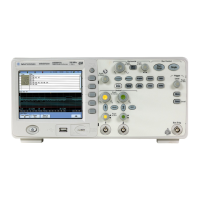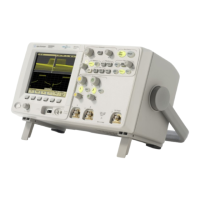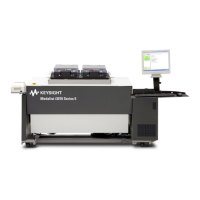Chapter 4 Angular Measurements
Angular Position Measurements
4-32 Measurements Reference Guide
Programming the machine to be calibrated
Because of the variety of controllers, it is not possible to present specific
instructions for any particular one here. Apply the information presented
here to your measurement situation.
Before you install hardware on your machine, you should program the
machine to perform the basic movements it will be doing during the
measurement. A description of the measurement steps is provided in the
previous section “Procedure — summary”.
The example program in Figure 4-18 assumes that the machine’s relative
zero was set with the machine holding the measurement fixture and the
top of the precision index table in the position that allows the base of the
table to rotate independently from the top. This position is 2 mm above
the “neutral” position. Refer also to Figure 4-16A/B. The example program
in Figure 4-18:
1. Starts from relative zero position set for your measurement, with the
precision index table’s top lifted to allow clearance for its base to
rotate independently.
2. Rotates the table’s base the number of degrees you specify.
3. Engages the table’s top and base, by lowering the top 3 mm. Feed rate
and clamping force during engagement are important.
The feed rate during engagement is specified. Too slow a feed rate
may result in poor engagement repeatability. Too fast a feed rate may
damage measurement hardware or cause vibrations in the setup.
The correct clamping force is provided when the clutch is forced 1 mm
below its “neutral” position.
4. Dwells at the engaged position for the time specified, to allow the
Agilent 5530 calibrator to collect data.
5. Lifts the top of the precision index table 3 mm, to completely
disengage it from the table’s base.
